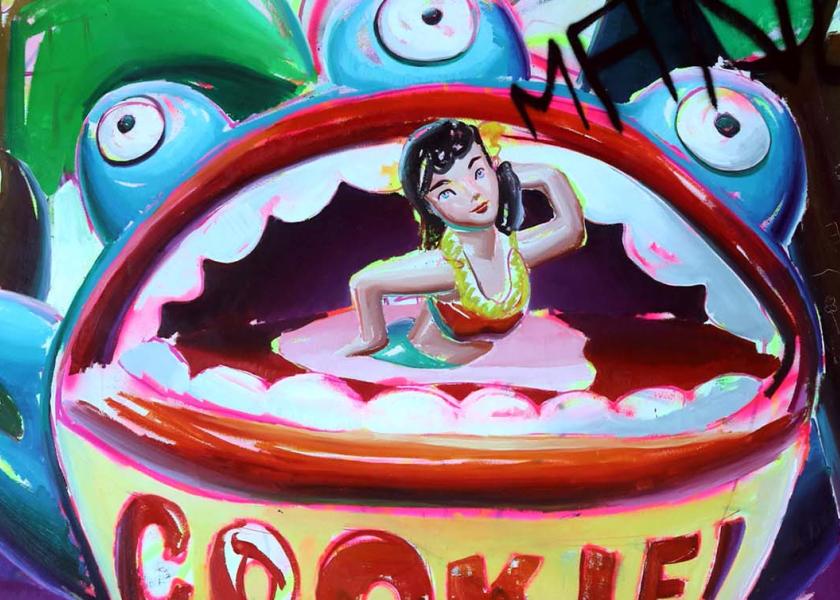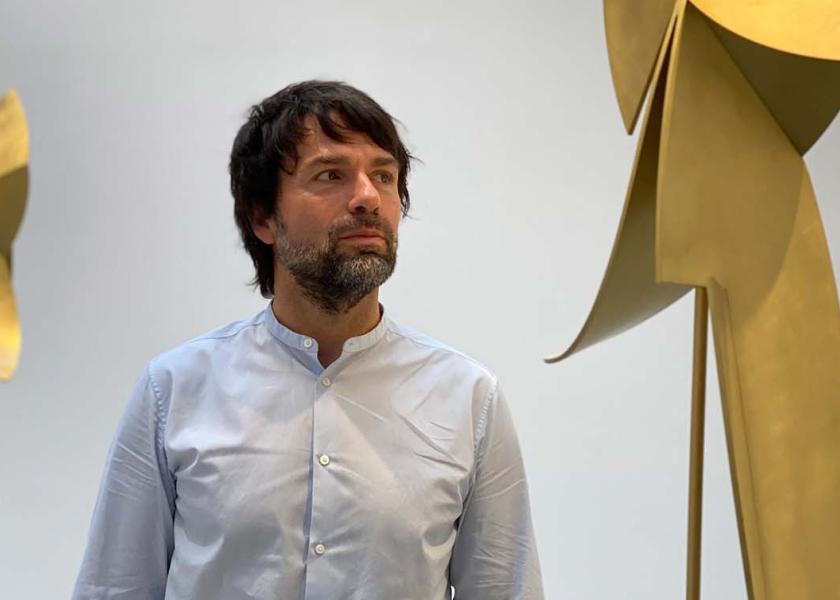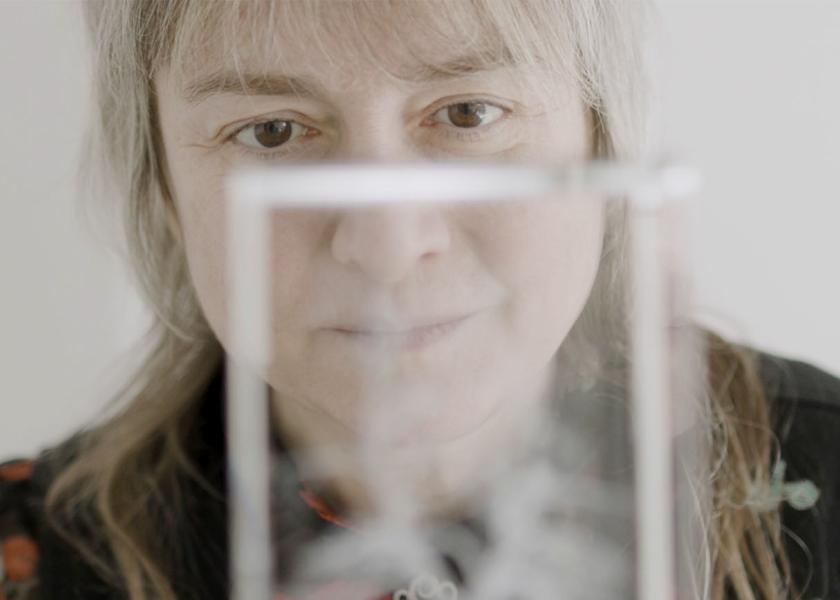Teresa Solar
The brave sculptor
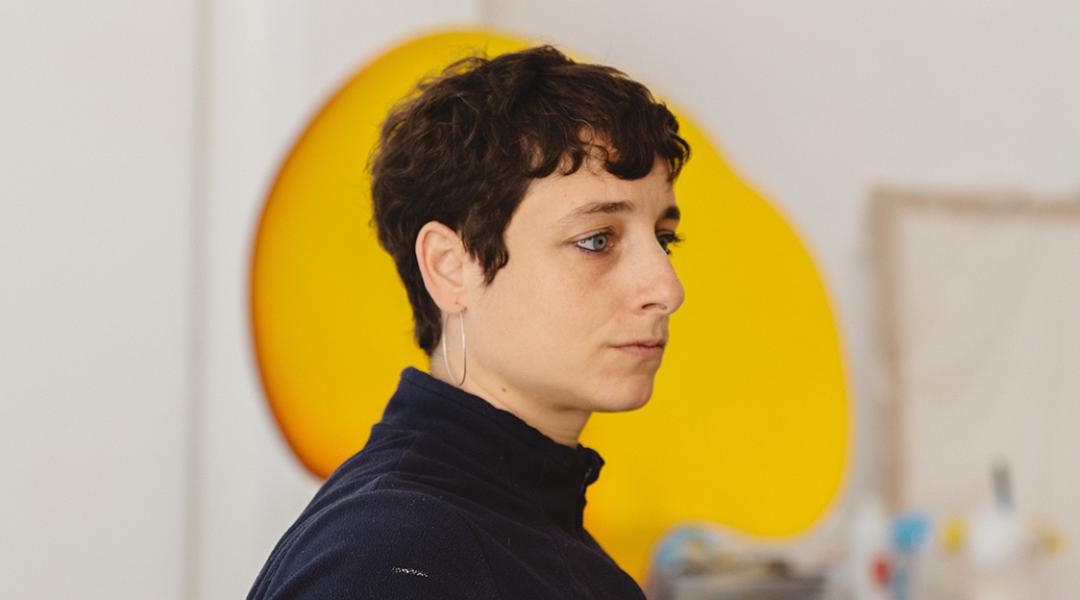
2022 has confirmed Teresa Solar’s international exposure, bearing the fruits of work that the artist has been developing conscientiously and persistently for the last decade. Her ‘Osteoclast’ installation shone bright at the 2021 Liverpool Biennial, and this year, her ‘Tunnel Boring Machines’ follow suit at the Venice Biennale, where she exhibits her talent in a mature sculptural universe that is honest with her ideas and career.
Her multicultural heritage, Spanish on her father’s side and Egyptian on her mother’s, has granted Teresa Solar Abboud (Madrid, 1985) a metaphysical discourse that permeates her work. In the beginning, notably intangible betting on audiovisuals; currently, tremendously palpable with her huge pieces of clay and resin, like the Tunnel Boring Machines, which will be exhibited at the Venice Biennale until the 27th of November. She and June Crespo are the only Spanish artists invited by event commissioner Cecilia Alemani. “I’d never had imagined that I’d be exhibiting at the Biennale. Without a doubt, it’s a gift and an opportunity for growth,” she confesses.
But what is it about Solar’s work that has captivated such a renowned art commissioner? “I think it’s in tune with the key concepts of the exhibition, which I also strongly identify with, and this has meant that the work has developed really organically,” she declares. The concepts she refers to were described by Alemani herself when explaining that The Milk of Dreams, the title of the general exhibit of this 2022 Biennale, took the otherworldly creatures of surrealist artist Leonora Carrington as companions in an imaginary journey through the metamorphosis of bodies and the definitions of being human. Precisely one of the particular strengths of Solar’s creative argument.
“Making art is looking at the world intensely. Therefore, it means being immersed in it and investigating it”
How can we define the three pieces you’ve taken to the Biennale?
The Tunnel Boring Machines want to be mixed beings: earth, animal, and engineering. I understand them as reimagined subsoil, through which we move and which we extract from, which is both so abstract and so unfathomable that we struggle to understand it. It’s subsoil full of fossils crushed by the pressure of the strata, cracks, fungi, tons of compressed materials, and also machines that work in it day and night. I imagine the Tunnel Boring Machines crossing and perforating geological times with their prehistorical half-dolphin, half-propeller fins.
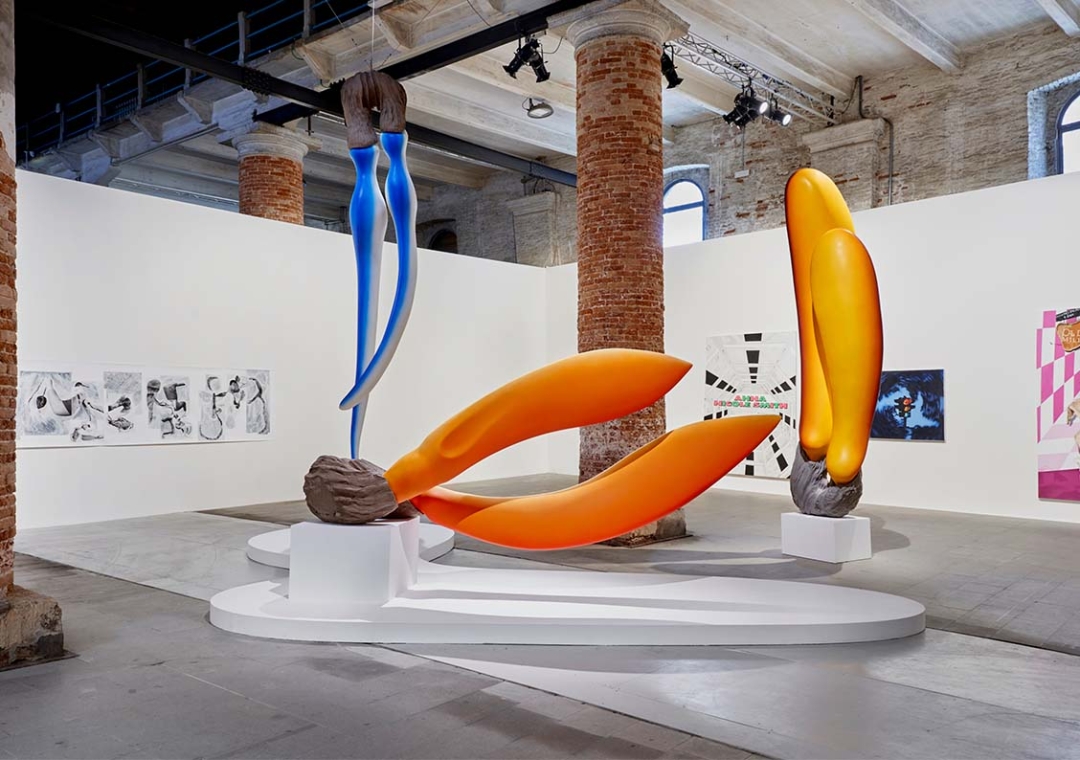
Image with the three works that Teresa Solar, an artist from Madrid, presents at the Venice Biennale. © Clelia Cadamuro
Resin and clay. What do they represent?
Clay is always a metaphor for the subsoil, for the uncharted material that we live on but that we know so little about. It also speaks of an ancient geological time, of the genesis of our planet. The resin extremities, on the other hand, are reminiscent of animals, and at the same time, look like industrial, polished and aerodynamic designs that refer to human industries. The smooth finishes covering the pieces connect to the sophistication of tools invented by humankind. So, in Tunnel Boring Machines we find clumsy and obscure clay pieces that collide with sophisticated bodies born to engineering and design. That’s where the clash of concepts lies.
Nothing in your art is unwarranted, so, is there an explanation for the bright colours as well?
Yes. The colour palette I usually use is blue, red, orange, and yellow; the same you’d find at a port or when entering a mine, machines are painted in colours that can be seen in the dark. In the case of the Tunnel Boring Machines for this Biennale, I have also worked with colour ranges related to the instructional panels at natural science museums; for example, the yellow one corresponds to the educational displays to explain different strata in the Earth’s crust.
“I think that, to make art, you need to be really honest with yourself, and that always takes a lot of courage”
Why is a large part of your work interested in tunnels?
They are isolated places, also psychologically, which are related to those bodily tunnels that often don’t respond to our own thoughts. Thoughts are always so abstract in contrast to our physical anatomies! That’s at the foundation of my work, and it’s all related to my multicultural heritage.
In which sense?
Culture shocks, speaking different languages that aren’t always learnt or spoken properly, for example. That is also at the core of my interest in representing the speech anatomy and muscles in some of my work. That anatomy does not always correspond to our own thought, and it turns communication between each other into one big misunderstanding. [Teresa speaks the Arabic she learnt from her mother, but she can’t read or write it. That’s where her tendency to artistically delve into the theme of speech comes from].
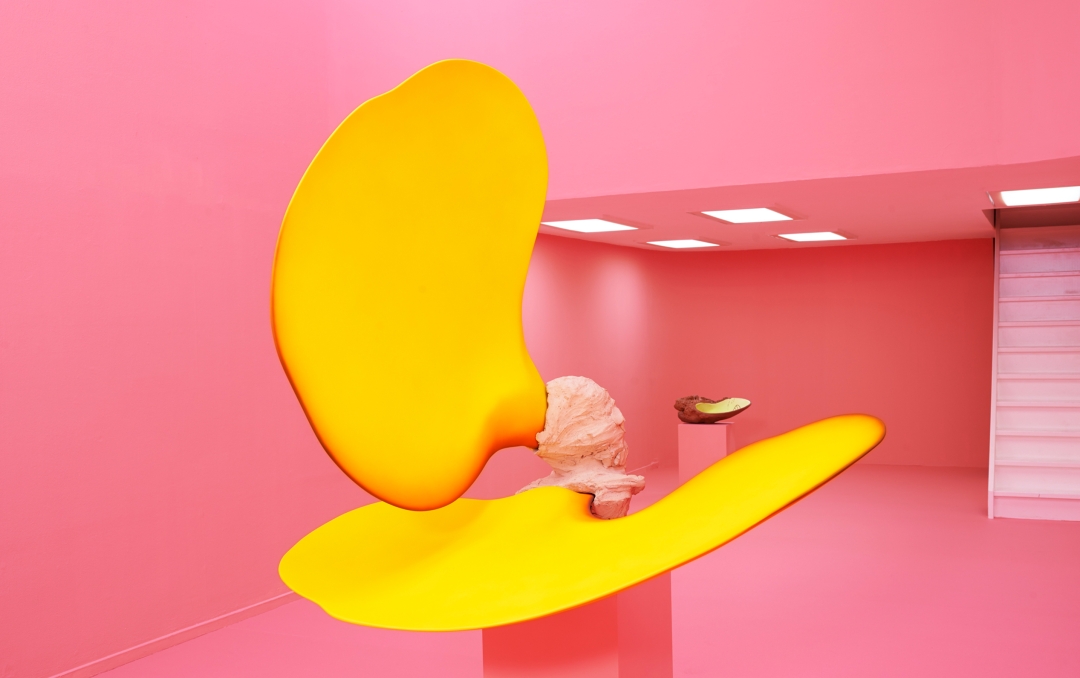
’Big Mouth. Within Boundaries. Oozing Out’, name of the project presented by Teresa Solar at the start of the year in The Hague. © The Hague Contemporary
Artistic research, creation, and contemporary thought, are they three intensely intertwined forces?
For me, they are one and the same. Making art is looking at the world intensely. Therefore, it means being immersed in it and investigating it. And these research avenues can be really diverse. In any case, in the end, it’s all related to how you perceive and act on the world you live in.
You once said that art makes you braver. In which aspects of life do you need that courage?
I think that, to make art, you need to be really honest with yourself, and that always takes a lot of courage. You have to be brave enough to take the plunge with the large projects we make, to have the energy to make them, and not be afraid of what could come next.
“If an artist wants an international career, they must be consistent and be open to any opportunity abroad”
You’re also not afraid of international exposure. In fact, you’re an example of young Spanish talent with recognition abroad.
Yes, and I’ve always earnt that international exposure from Madrid. If an artist wants an international career, they must be consistent and be open to any opportunity abroad. The important thing is to make a sustained effort
And, finally, when making art, when do you feel the freest?
I’m not sure if it’s the freest, but one of the most intense, and perhaps most inexplainable, is when you associate ideas. These ideas can come from many different places: from a serious and lengthy research process to a news article in a newspaper, to something I see on the street. In that association of ideas, I suddenly sense “something” with profound meaning. That’s the best part about my job.
